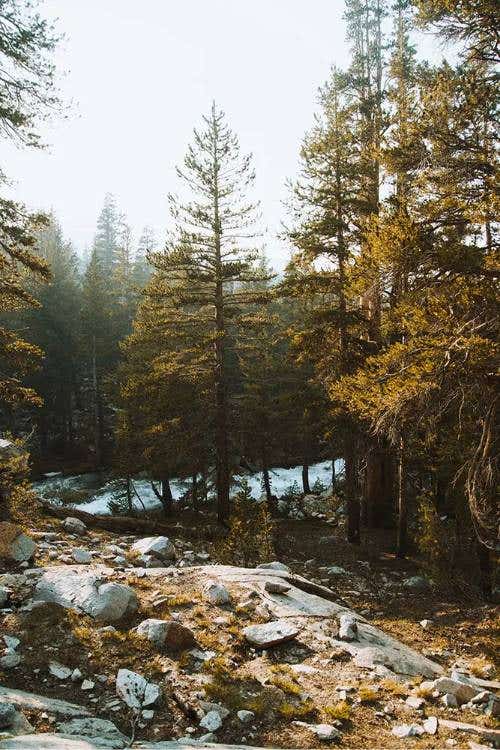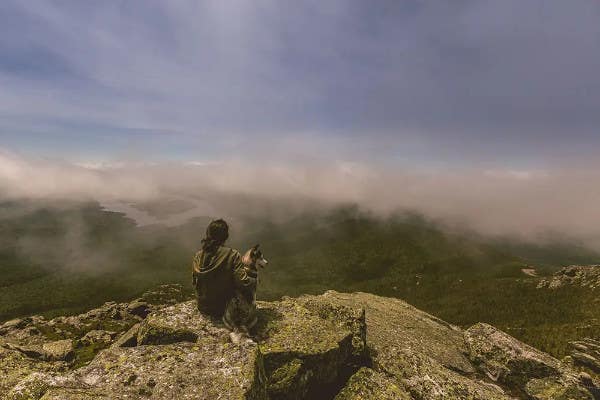The Best Landscape Photography Tips For Beginners
It’s happened to all of us. You stroll past a landscape that’s so inspiring, it stops you in your tracks. But when you take a photo, it doesn’t quite match up to the image in front of you. There’s a reason for that: the human eye is a natural filter. It automatically travels to the most pleasing points of a scene – but cameras need a little help.
Our landscape photography tips for beginners will teach you how to work a digital camera and set up the perfect shot.
Learn the basic camera settings for landscape photography
You don’t have to be a pro to take beautiful landscape pictures, but knowing your way around your camera settings can make a dramatic difference. The three pillars of landscape photography are ISO, aperture and shutter speed. Together, these make up the ‘exposure triangle.’
ISO is a number that’s linked to your camera’s sensitivity to light. The higher it is, the more sensitive your camera is. For clean landscape shots, the general rule of thumb is to stick with the base ISO, which is usually between 100 and 200. If you’re shooting a darker scene or a moving object, you’ll want to raise the ISO to prevent blurriness. Just keep in mind that higher ISO settings can leave you with ‘grainy’ or noisy pictures. (This is one reason why photographers are always chasing good lighting – more on that in a minute!)
Aperture describes the size of the lens opening, which lets in light. When you hear photographers talking about f/stops, they mean the aperture. To take detailed landscape photos, create a large depth of field using a smaller aperture, such as f/13, f/16 or f/22. This will keep the background and foreground of your image in focus. Aperture confuses many new photographers because a smaller aperture is a higher number.


Shutter speed refers to the length of time your lens is open during exposure. Using a slow shutter speed will help you to experiment with motion. It captures all kinds of movement – including yours – so be sure to use a tripod to avoid ending up with blurry pictures. Quicker shutter speeds are better for snapping fast-moving subjects (and you don’t need a tripod).
Depending on your camera, you might be able to automate these settings - but it’s important to have a handle on them first.
Top Tip: When the sun goes down, use long exposure photography to capture nighttime scenes, like shooting stars and the fading light of passing cars. Put your camera on a tripod, and set it to bulb mode. This keeps the shutter open for more than the standard 30 seconds. The longer it’s open, the longer the exposure.
Invest in helpful camera gear
Before you start scouting landscape photography locations, build up your camera kit. You don’t have to buy the most expensive gear right away, but you won’t be able to take epic shots without some of the key tools.
The top priority is a wide-angle lens. Whether you’re shooting with a fixed-lens compact camera or a camera with interchangeable lens, a wide lens will allow you to fit more scenery in your frame and snap stunning images. We recommend a lens between 16mm and 35mm.


Next is a tripod. It frees up your hands, so you can survey the scene from different angles and perspectives to find the ‘money shot.’ After a while, you’ll be more critical about what’s inside or outside of your frame, and that attention to detail is the mark of a true landscape photographer! If you’re shooting in low light or for long exposures, use a tripod to take clear images.
Finally, filters can boost the quality of your photos, especially if you’re working in less-than-ideal conditions. For example, in bright daylight, use a neutral density (ND) filter to reduce the amount of light entering the lens. Polarising filters are great, too. They contrast the colours in the sky and help with glare.
Top Tip: Check out the DJI Mavic PT47 ND Filter Set. It includes ND4, ND8, ND16 and ND32 filters to match all types of lighting.
Choose a point of interest
Composition is everything. It balances the photo and draws our attention to certain features. There are a few compositional techniques you can study, such as the Rule of Thirds, Leading Lines and the Rule of Odds. For beginners, we recommend building your scene around the horizon using the Rule of Thirds. To do this, divide your frame up into thirds horizontally and vertically, so you’re left with nine squares. Your camera may show a grid in the viewfinder or on the LCD display.


Our eyes are drawn to the points where the lines intersect, so that’s where you should place your subject. Of course, with landscapes, the entire scene is the subject, but there’s nearly always a point of interest – like a mountain or lake. Play around with positioning, but generally, landscape photos turn out better when the subject is off-centre.
Subjects aside, it’s good practice to make sure your horizon line is straight and somewhere towards the middle of your image.
Shoot in the early mornings and evenings
Since you’re working with nature, lighting can make or break a landscape photo. When you can, wait to shoot in the ‘golden hours’ – the first hour after sunrise, and the last hour before sunset. At these times, the light is at its best. It’s soft and warm, and the low angle of the sun leads to a much more natural landscape image.
If you get to your location and the lighting isn’t optimal, don’t be afraid to wait around for a while to see if the lighting changes, or even schedule a reshoot. Landscape photos are only as good as the scene. If the scene isn’t inspiring, chances are your images won’t be, either.


Top Tip: Use the water as a mirror. In golden light, the water creates reflections, which can add an interesting dimension to your photos. Pop your camera on a tripod and choose a slow shutter speed.
Experiment with new locations and techniques
Half the fun of photography is pushing the boundaries. Once you know how to take well-composed and exposed photos, you can start to break the rules. For example, consider adding people to your landscape. Maybe it’s a cute kid running through a field of flowers, or a lone traveller taking in the scene in front of them.
An easy way to take one-of-a-kind photos is to venture where few people have been before. This might mean walking a little further or exploring places that aren’t popular with landscape photographers. As always, be safe and respectful of the land and its culture, and let someone know where you’re going.


Take the time to edit your photos
Capturing an image is half the battle. Landscape photography editing can be the difference between a good and a great photo – and it’s not cheating! Like darkrooms before it, Photoshop is another tool in your arsenal.
You don’t need to be a master retoucher, but think about using it to crop your picture, adjust the plane or play with the saturation. Black and white can emphasise the shape, texture and lines of your photo, and colours can be scaled back with really interesting results.


Top Tip: Shoot raw files over jpeg. They hold onto all the data of the image, so you have more flexibility with post-processing.
Keep practising!
If your first few shoots aren’t as successful as you like, don’t stress. Just focus on honing your skills, and each photo will be better than the last. When you have questions, head to your local Ted’s Cameras store. Our team is always happy to help and walk you through the equipment you need to get the job done!
Next Post
Tips For Taking Breathtaking Landscape Photos With A Camera
Previous Post
Adventure Travel Photography Seminar with Andrew Peacock
